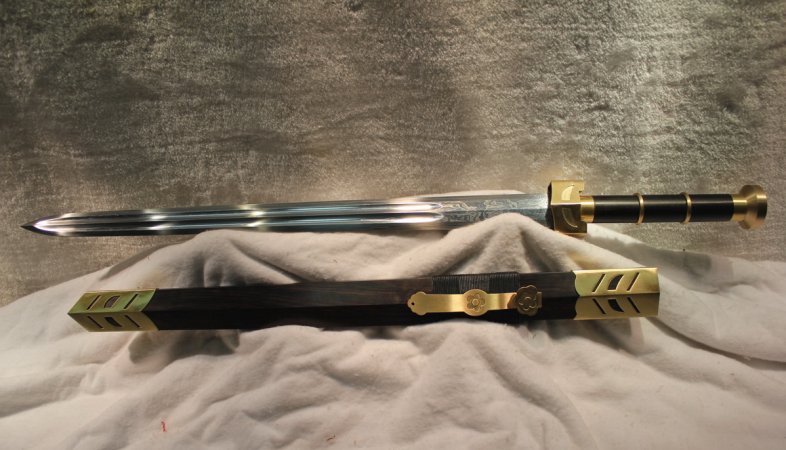Ancient History Of Chinese Swords
Rafael - AncientPages.com - Just like China, the swords that were utilized for battles also had a long and rich history. The earliest known Chinese swords from the period were made specifically of stone and were utilized in the prehistoric era. Bronze Chinese swords have been traced back to the Shang Dynasty where these types of daggers and other weapons were mostly used.
Folded Steel Chinese Han Sword double edge, sharp on both sides, brass fittings. Credit: Katanas For Sale
In the mid-third century BC, long bronze swords suddenly appeared yet the later swords that appeared in ancient China were made of steel or iron. These types of metals were wrought and never cast, and the swords during that period usually featured a length of about seventy to a hundred centimeters, although there were numerous long swords that have been found. These individuals have classified their Chinese swords into two main types: the Jian, which have dual-edged blades, and the Dao which are the single-edged pieces.
History Of The Chinese Swords
In 1045 BC to 256 BC during the Zhou Dynasty, the Chinese swords commonly appeared as short, single-handed and double-edged straight blades made of bronze. When the Qin Dynasty arrived, the swords were extended and were also developed into two-handed blades.
The Han Dynasty was when the very first single-edged weapons were created, as well as those with steel blades. This newly developed design for the Chinese swords remained prominent until the Song Dynasty where a few adjustments were made to fit the requisites of the army during that period.
During the Yuan Dynasty, the Turko-Mongol saber was introduced as the primary weapon for soldiers and civilians; its shape became the basis for the Chinese blades, Liuyedao and the Yanmaodao of the later dynasties. Lastly, in the late Qing Dynasty, the more common Niuweidao was eventually developed. It was a single-handed, single-edged Chinese sword that featured a heavy blade with a unique-looking flaring tip. It was never issued to the army or the military and was primarily a weapon for the defense of the civilians.
The Jian Sword
The Jian is a straight, double-edged Chinese sword that was a weapon used during the last 2500 years in ancient China. The first mention of the Chinese Jian dates back to the seventh century BCE – the Spring and Autumn period; one of the earliest samples of this type of sword was the Sword of Goujian. The classic single-handed versions of the Jian featured blades that went up to forty-five to eighty centimeters in length; its average weight was about 1.5 to 2 pounds for a Chinese sword that measured an average of seventy centimeters.
Historical And Modern Use Of The Jian
The Jian in different periods featured different lengths, sizes, and weight. Though there are distinct characteristics to the Chinese blade, its main purpose was to cut and thrust adequately towards a target. There are also numerous schools of swordsmanship that teach the Jian yet the styles vary as well yet the general purpose and use of the blade are still the same. The historical Jian wielders engaged in a test cutting process called the Shizhan, and they would practice and hone their skills of using the Chinese blade on targets known as caoren.
See also:
Secrets Of Ninja Swords – Favorite Weapon Of The Shinobi
Samurai Swords: Katana And Wakizashi And Their Long Tradition
Sacred Regalia Of Japanese Emperor: Sword, Mirror And Jewel In Ancient Japanese Tradition
Today, a large number of Chinese martial arts such as the Taijiquan have practitioners that still progressively train extensively using the Jian. Most of the practitioners claim that having expertise in the techniques of the Jian is the highest physical expression of their Kung-Fu. Most of the Chinese Jian that are present are the washu jian or the flexible tai chi which are primarily utilized for performance or ceremonial purposes only.
Appearance Of The Jian
The Jian has guards or hilts that protect the wielder’s hand especially when the opposing blade aims to poke or thrust along this area. The guard’s shape can be characterized as having short wings that point either backward or forward; it also has a handle positioned right behind the guard which helps provide the wielder with a better grip for both or just one hand. These grips are often made of fluted wood or sometimes covered in rayskin where most are also overlaid with a cord.
The ends of its handle feature a pommel which is necessary for proper balance; it also prevents the handle from sliding through the wielder’s grip, and it is also a good piece for tapping or striking the opponent. During the Ming Dynasty, these weapons commonly passed through a pommel and in the Qing Dynasty, it would pass through a hole in the weapon’s grip. Contemporary Chinese swords usually link the tassel to the pommel’s end; historically, the ancient Chinese would make use of lanyards that would allow the user to retain the sword during battles.
Dao Blades
The Dao are single-edged Chinese blades that are mainly used for chopping and slashing; its most known form is the Chinese saber though the pieces with much larger blades are usually referred to as the Chinese Broadswords. In China, this weapon is considered to be one of the four classic weapons together with the spear, staff, and the sword.
Historical And Modern Uses Of The Dao
The Dao became one of the most popular pieces among the cavalry during the Han period. This was because the Dao was extremely sturdy and was superior when it came to chopping targets. In this day and age, the martial arts schools in China still continue to train participants extensively with this blade, seeing it as a powerful and very effective conditioning tool, as well as a very versatile weapon. Training with the Dao will also teach its participants proper self-defense which can eventually be utilized with any day to day life items.
There are other variations of this Chinese Dao and it includes the large Bagua Dao and the long-handled Pudao. Some of the acquired blades from the Qing Dynasty survived history and even had numerous descendants see military action during the twentieth century. The Dadao was commonly utilized by a couple of Chinese Militia against the Japanese invaders during the Second Sino-Japanese battles. The Miao Dao is the descendant of the Chang Dao and it was also utilized during this period.
Written by – Rafael - AncientPages.com Contributor
Copyright © AncientPages.com All rights reserved. This material may not be published, broadcast, rewritten or redistributed in whole or part without the express written permission of AncientPages.com
Expand for referencesMore From Ancient Pages
-
 Manticore – Legendary Persian Sphinx Whose Existence Is Still Discussed
Featured Stories | Jun 4, 2019
Manticore – Legendary Persian Sphinx Whose Existence Is Still Discussed
Featured Stories | Jun 4, 2019 -
 New Paintings And Details Uncovered In The Egyptian Temple Of Esna
Places | Oct 22, 2024
New Paintings And Details Uncovered In The Egyptian Temple Of Esna
Places | Oct 22, 2024 -
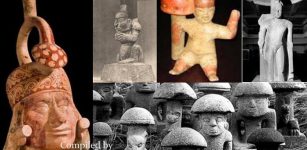 Mysterious Ancient Mushrooms In Myths And Legends: Sacred, Feared And Worshiped Among Ancient Civilizations
Featured Stories | Apr 26, 2023
Mysterious Ancient Mushrooms In Myths And Legends: Sacred, Feared And Worshiped Among Ancient Civilizations
Featured Stories | Apr 26, 2023 -
 Ancient Site Tres Zapotes Offers Evidence The Olmecs Practiced Shared Governance
Archaeology | May 30, 2017
Ancient Site Tres Zapotes Offers Evidence The Olmecs Practiced Shared Governance
Archaeology | May 30, 2017 -
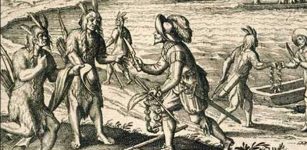 Indigenous People In Oconee Valley Remained In Southeastern US For Nearly 150 Years
Archaeology | Jul 15, 2020
Indigenous People In Oconee Valley Remained In Southeastern US For Nearly 150 Years
Archaeology | Jul 15, 2020 -
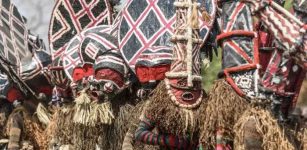 Famed Makishi Dancers And Likumbi Lya Mize Ceremony In Zambia – Much More Than Just A Festival
Ancient Traditions And Customs | Aug 6, 2019
Famed Makishi Dancers And Likumbi Lya Mize Ceremony In Zambia – Much More Than Just A Festival
Ancient Traditions And Customs | Aug 6, 2019 -
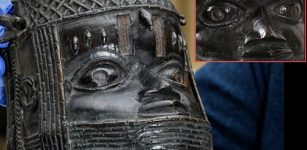 Benin Bronze Sculpture Looted By British Soldiers In Nigeria – Returns Home
Archaeology | Apr 2, 2021
Benin Bronze Sculpture Looted By British Soldiers In Nigeria – Returns Home
Archaeology | Apr 2, 2021 -
 All 5 Genetic ‘Letters’ Of DNA May Have Been Brought By Meteorites To Ancient Earth
DNA | May 21, 2022
All 5 Genetic ‘Letters’ Of DNA May Have Been Brought By Meteorites To Ancient Earth
DNA | May 21, 2022 -
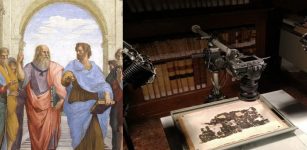 Has A Herculaneum Scroll Solved The Mystery Of Plato’s Death?
Linguistic Discoveries | May 8, 2024
Has A Herculaneum Scroll Solved The Mystery Of Plato’s Death?
Linguistic Discoveries | May 8, 2024 -
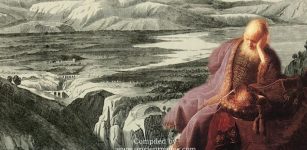 Tahpanhes – Biblical City Where Prophet Jeremiah And King Zedekiah’s Daughters Hid From The Babylonians
Biblical Mysteries | Jul 19, 2021
Tahpanhes – Biblical City Where Prophet Jeremiah And King Zedekiah’s Daughters Hid From The Babylonians
Biblical Mysteries | Jul 19, 2021 -
 Ancient Hindu High-Tech That Contributed To Modern Science
Civilizations | Nov 11, 2014
Ancient Hindu High-Tech That Contributed To Modern Science
Civilizations | Nov 11, 2014 -
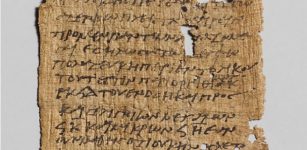 Papyri Was Still In Use After The Arab Invasion In Egypt
Archaeology | Jul 14, 2020
Papyri Was Still In Use After The Arab Invasion In Egypt
Archaeology | Jul 14, 2020 -
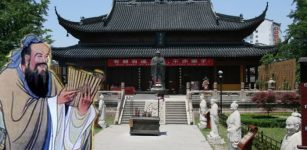 Master Kong Confucius: Great Philosopher And ‘Teacher Of All Teachers’ Ahead Of His Time
Featured Stories | Nov 25, 2016
Master Kong Confucius: Great Philosopher And ‘Teacher Of All Teachers’ Ahead Of His Time
Featured Stories | Nov 25, 2016 -
 Mysterious Advanced Underground Civilization And A Secret Society – Astonishing Discovery And Connection – Part 1
Ancient Mysteries | Apr 21, 2018
Mysterious Advanced Underground Civilization And A Secret Society – Astonishing Discovery And Connection – Part 1
Ancient Mysteries | Apr 21, 2018 -
 Rollo: Viking Sea Lord, Chieftain, Lone Wolf And The First Ruler Of Normandy
Featured Stories | Dec 6, 2023
Rollo: Viking Sea Lord, Chieftain, Lone Wolf And The First Ruler Of Normandy
Featured Stories | Dec 6, 2023 -
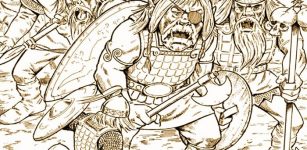 Fomorians: Supernatural Race Of Giants Who Came From Atlantis
Celtic Mythology | Jul 18, 2017
Fomorians: Supernatural Race Of Giants Who Came From Atlantis
Celtic Mythology | Jul 18, 2017 -
 The Kitchen God In Ancient Vietnamese Tradition Is Still Alive
Featured Stories | Feb 23, 2016
The Kitchen God In Ancient Vietnamese Tradition Is Still Alive
Featured Stories | Feb 23, 2016 -
 Large Pre-Columbian Pyramid Discovered Under Highway In Mexico But It Will Not Be Excavated
Archaeology | Dec 16, 2024
Large Pre-Columbian Pyramid Discovered Under Highway In Mexico But It Will Not Be Excavated
Archaeology | Dec 16, 2024 -
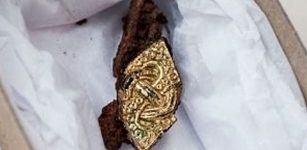 Viking Treasures Discovered In Chamber Grave In Denmark
Archaeology | Apr 4, 2014
Viking Treasures Discovered In Chamber Grave In Denmark
Archaeology | Apr 4, 2014 -
 Impressive 2,700-Year-Old Farmhouse And 1,500-Year-Old Monastery Uncovered In Rosh Ha-‘Ayin
Archaeology | Dec 30, 2015
Impressive 2,700-Year-Old Farmhouse And 1,500-Year-Old Monastery Uncovered In Rosh Ha-‘Ayin
Archaeology | Dec 30, 2015

